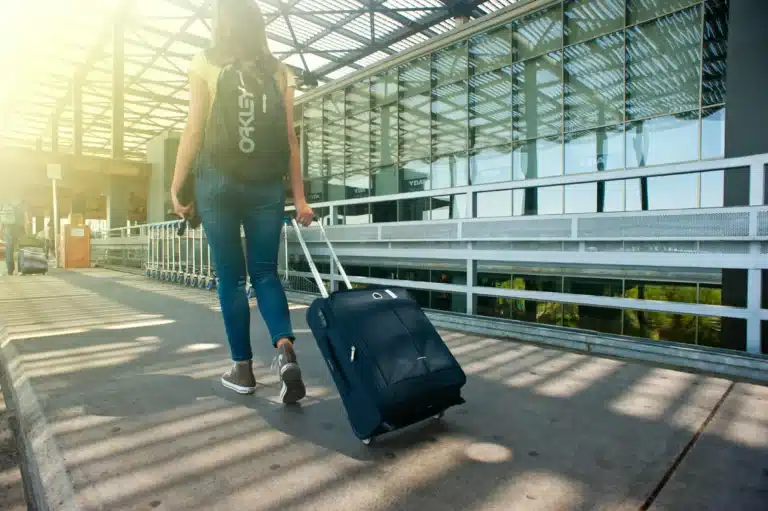Smart Packing Tips Every Traveler Should Know
Packing can make or break your travel experience. Whether you’re planning a weekend getaway or a month-long adventure, how you pack determines how smoothly your trip goes. In 2025, smart travel is about more than fitting everything in a bag – it’s about traveling light, stress-free, and prepared for anything. This guide covers the best packing tips every traveler should know, helping you save time, space, and sanity while ensuring you never forget the essentials again.
Why Smart Packing Matters
Good packing is the foundation of enjoyable travel. It helps you stay organized, move easily, and adapt to unexpected changes. Airlines are tightening baggage rules, so efficient packing can also save you money. Beyond practicality, traveling light frees your mind – instead of worrying about lost items or heavy luggage, you can focus on exploring. Smart packing also promotes sustainability since you’re less likely to overconsume or waste products on the road.
1. Start with a Packing List
A packing list is your first step toward a stress-free trip. It keeps you organized, prevents overpacking, and ensures you don’t forget small but important items like chargers, adapters, or medications. Write your list several days before departure so you have time to add or remove things as you plan. Break it into sections – clothing, electronics, toiletries, travel documents, and personal items.
Pro Tip
Keep a master list on your phone. After each trip, update it with notes about what you didn’t use or wish you had packed. Over time, you’ll create a personalized list that fits your travel style perfectly.
2. Choose the Right Luggage
Your luggage should suit your travel type. For city breaks, a carry-on suitcase with spinner wheels is ideal. For adventure or long-term travel, a backpack with compartments offers flexibility and comfort. Check airline carry-on restrictions before choosing your bag – size and weight limits vary widely. Opt for lightweight, durable materials, and invest in luggage with built-in locks or compression straps.
Pro Tip
Pick luggage in a unique color or pattern to spot it easily on baggage carousels. Add a sturdy luggage tag with your contact information, but avoid showing your home address publicly.
3. Roll, Don’t Fold
Rolling clothes instead of folding them saves space and reduces wrinkles. This method is particularly effective for casual wear like T-shirts, jeans, and knitwear. For formal or delicate clothing, use packing cubes or tissue paper to keep items smooth. Rolling also allows you to see all your clothes at once, preventing the frustration of unpacking your entire bag just to find one shirt.
Pro Tip
Combine rolling with compression packing cubes. They help maximize space and make it easy to organize outfits by category or day.

4. Stick to a Capsule Wardrobe
Overpacking often happens because travelers bring too many “just in case” outfits. Instead, create a capsule wardrobe – a small collection of versatile pieces that can be mixed and matched. Choose neutral colors and lightweight fabrics suitable for layering. Aim for 3–4 tops, 2 bottoms, 1 jacket, and 1 pair of shoes that match everything. Accessories like scarves or hats can refresh your look without taking up much space.
Pro Tip
If you’re traveling long-term, pack clothing that dries quickly and resists wrinkles. Many travel brands offer performance fabrics designed for easy washing and re-wearing.
5. Pack Multi-Purpose Items
Every item in your bag should earn its place. Opt for products that serve multiple functions – like a sarong that can be used as a beach cover, blanket, or towel, or a jacket with hidden pockets for valuables. Refillable toiletry containers reduce waste and allow you to customize what you bring. Tech gear should also multitask – for instance, a power bank with built-in cables or a universal adapter that fits multiple plug types.
Pro Tip
A foldable tote bag is a must-have. It takes up almost no space and can serve as an extra carry-on for souvenirs or groceries during your trip.
6. Master the Art of Layering
Weather can be unpredictable, especially in destinations with changing climates. Instead of packing bulky items, rely on layers. A moisture-wicking base layer, a mid-layer like a light sweater, and a windproof or waterproof outer layer can handle most conditions. This approach lets you adapt easily without carrying heavy coats or multiple outfits.
Pro Tip
Choose lightweight, breathable fabrics like merino wool or synthetic blends that regulate temperature and resist odor – perfect for long travel days.
7. Keep Essentials in Your Carry-On
Always pack your most important items – passport, wallet, medication, phone, and one change of clothes – in your carry-on. Lost luggage can happen, and having essentials on hand ensures you’re not stranded without necessities. Add a refillable water bottle, snacks, and noise-canceling headphones for comfort. A small pouch for electronics and cables keeps everything easy to access during security checks.
Pro Tip
Store travel documents in a waterproof organizer. It keeps your passport, boarding passes, and insurance papers safe and dry.
8. Weigh Your Luggage Before Leaving
Airline weight limits can catch even seasoned travelers off guard. Invest in a portable luggage scale to check your bag’s weight before heading to the airport. It helps you avoid last-minute repacking or costly overweight fees. If you’re close to the limit, wear your heaviest shoes and jacket on the plane to lighten your load.
Pro Tip
Keep a few lightweight reusable bags in your suitcase. If your bag exceeds the limit, you can redistribute items easily at the airport.
9. Organize with Packing Cubes
Packing cubes revolutionize how travelers pack. They divide your belongings into organized sections, making unpacking and repacking faster. Use different cubes for tops, bottoms, undergarments, and accessories. Some travelers even color-code them for easy identification. They also help compress clothing, giving you more space without adding weight.
Pro Tip
Label each cube with a small tag or marker, especially if you’re traveling with family or sharing luggage. It saves time when finding specific items.
10. Secure Toiletries and Liquids
Leaking toiletries can ruin your luggage. Always double-seal liquid containers in resealable bags or invest in leak-proof silicone bottles. Follow the 100ml (3.4 oz) carry-on liquid rule to breeze through airport security. Pack heavier liquids at the bottom of your suitcase and keep fragile items wrapped in clothing for protection.
Pro Tip
Switch to solid toiletries – like shampoo bars, conditioner bars, and solid perfumes. They last longer, save space, and eliminate the risk of spills.
11. Protect Valuables and Electronics
Electronics are essential for modern travelers, but they’re also delicate and valuable. Use padded cases for laptops, cameras, and tablets. Keep chargers, adapters, and cables organized in a tech pouch. If you’re traveling internationally, check voltage compatibility for devices. For extra security, back up photos and documents to the cloud or an external drive before your trip.
Pro Tip
Carry small electronic accessories in zippered mesh bags – they’re transparent, lightweight, and make airport security checks easier.
12. Use Smart Technology
Travel gadgets can simplify packing and organization. Smart luggage trackers like Apple AirTag or Tile help locate your bags if they go missing. Digital luggage locks and portable Wi-Fi devices improve convenience and security. You can also use travel apps to manage packing lists, track expenses, and store digital copies of your documents.
Pro Tip
Download maps, itineraries, and translation apps offline before departure. That way, you can access them even without Wi-Fi.
13. Plan for Souvenirs
Many travelers forget to leave room for souvenirs. If you enjoy shopping abroad, plan extra space in your suitcase or bring a foldable duffel bag. Lightweight gifts like postcards, textiles, or local snacks are easier to pack than bulky items. Ship larger purchases home when possible to avoid excess baggage fees.
Pro Tip
Roll fragile items in clothing for cushioning, or use bubble wrap from local stores to protect glass and ceramics.
14. Keep Laundry in Check
If you’re traveling for more than a week, laundry becomes part of the routine. Pack a small laundry bag to separate dirty clothes. Lightweight detergent sheets or travel-sized soap bars let you wash essentials in your sink. Many hotels and hostels offer laundry services, so plan accordingly.
Pro Tip
Choose quick-dry fabrics so you can wash and reuse clothes easily. Hang-dry overnight – they’ll be ready by morning.
15. Double-Check Before You Leave
Before zipping up your suitcase, take five minutes to review everything. Confirm you have essential documents, medications, and chargers. Reassess your list – is there anything you packed “just in case” that you don’t really need? Removing even one or two items makes travel easier and lighter.
Pro Tip
Do a “trial pack” a day before your trip. If closing your suitcase feels like a workout, you’ve packed too much.
The Final Word: Pack Light, Travel Far
Smart packing isn’t about restriction – it’s about freedom. When your luggage is organized, light, and thoughtfully packed, you move through airports, trains, and cities with ease. Every item you carry should serve a purpose, make you comfortable, or bring joy. With these smart packing tips, you’ll spend less time stressing over what’s in your bag and more time enjoying the journey itself. Travel light, stay ready, and embrace every destination with confidence.







